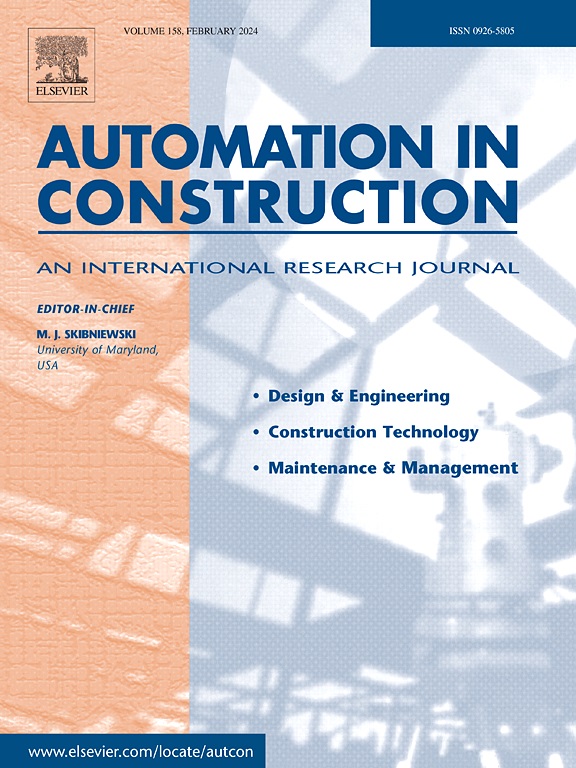使用快速点特征直方图和 PatchCore 对合成砖石拱桥点云中的裂缝进行异常检测
IF 9.6
1区 工程技术
Q1 CONSTRUCTION & BUILDING TECHNOLOGY
引用次数: 0
摘要
老化圬工拱桥的管理需要定期进行现场检查,以识别潜在的结构退化迹象。以往的研究侧重于从图像中检测表面裂缝。本文开发了另一种方法,即通过几何变形从点云中识别裂缝。为此,我们为三维应用定制了一种名为 PatchCore 的基于图像的异常检测方法。首先,使用快速点特征直方图(FPFH)提取几何特征。然后,将 PatchCore 应用于使用三维有限元建模 (FEM) 和图形建模生成的带有裂纹标签的合成点云。结果表明,所提出的方法可以捕捉到拱门的表面和内部裂缝。分析表明,该方法对测量噪声、初始损伤和砌体表面粗糙度具有鲁棒性,可应用于其他桥梁构件。该方法在检测曲率微小变化和平面几何变形方面的局限性得到了强调,有待进一步改进。本文章由计算机程序翻译,如有差异,请以英文原文为准。
Anomaly detection of cracks in synthetic masonry arch bridge point clouds using fast point feature histograms and PatchCore
Management of ageing masonry arch bridges entails periodic site inspections to identify signs of potential structural degradation. Previous research has focused on detecting surface cracks from images. This paper develops an alternative approach where cracks are identified from point clouds via geometric distortions. An image-based anomaly detection method called PatchCore is customized for 3D applications for this purpose. First, Fast Point Feature Histograms (FPFH) are used to extract geometric features. Then PatchCore is applied on synthetic point clouds with crack labels, generated using 3D finite element modelling (FEM) and graphical modelling. Results show that the proposed method can capture surface and internal cracks in arches. Analyses show that the method is robust against measurement noise, initial damage and masonry surface roughness, and can be applied to other bridge components. Limitations of the method in detecting small changes in curvature and in-plane geometric distortions are highlighted for further improvements.
求助全文
通过发布文献求助,成功后即可免费获取论文全文。
去求助
来源期刊

Automation in Construction
工程技术-工程:土木
CiteScore
19.20
自引率
16.50%
发文量
563
审稿时长
8.5 months
期刊介绍:
Automation in Construction is an international journal that focuses on publishing original research papers related to the use of Information Technologies in various aspects of the construction industry. The journal covers topics such as design, engineering, construction technologies, and the maintenance and management of constructed facilities.
The scope of Automation in Construction is extensive and covers all stages of the construction life cycle. This includes initial planning and design, construction of the facility, operation and maintenance, as well as the eventual dismantling and recycling of buildings and engineering structures.
 求助内容:
求助内容: 应助结果提醒方式:
应助结果提醒方式:


